Have you ever wondered why do dogs have wet noses? This intriguing question holds the key to understanding our furry friends better! A dog’s nose is not just an adorable feature but serves several vital functions. Every time you notice your pup’s nose glistening, it’s more than just cuteness; it’s a sign of their health and well-being. But what makes these noses so special? Are wet noses a sign of a happy dog or an indication of something more? In this article, we will explore the fascinating secret behind your dog’s moist snout and uncover the science behind it. You’ll learn how a dog’s nose plays a crucial role in their sense of smell, helping them detect scents that are undetectable to humans. Plus, we will delve into common myths surrounding dog health and how these wet noses can indicate various conditions. So, if you’re curious about dog behavior or simply want to impress your friends with interesting pet facts, keep reading! Discover the captivating reasons behind why do dogs have wet noses and unlock the secrets of canine anatomy that every dog lover should know!
The Science Behind Wet Noses: Why Your Dog’s Snout is Always Moist
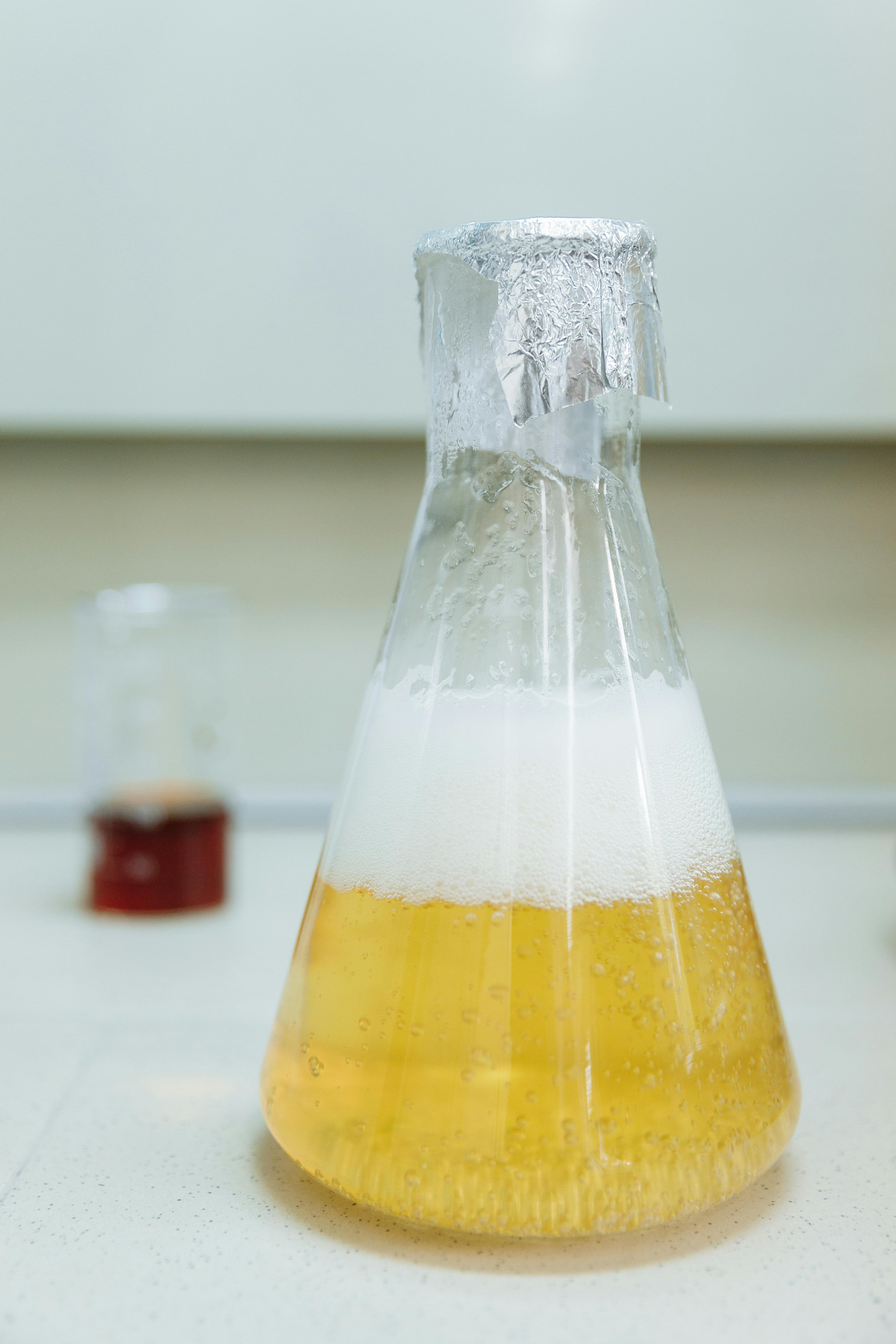
Dogs, those loyal companions, can often be seen with their wet noses. It’s one of their most charming features, but have you ever wondered why do dogs have wet noses? This question leads us into fascinating territory that combines biology, evolution, and even a bit of history. Let’s dive into the science behind those moist snouts and discover what makes them so unique.
The Purpose of a Wet Nose
A dog’s nose is more than just an adorable feature. It serves several important functions. The moisture on a dog’s nose actually helps enhance their sense of smell. A wet surface captures and holds scent molecules more effectively, making it easier for dogs to detect odors in their environment. This is crucial for their survival. Dogs have an incredible sense of smell, estimated to be between 10,000 to 100,000 times more sensitive than that of humans.
- Scientific Insights:
- Dogs have about 220 million scent receptors, compared to humans who have around 5 million.
- The moisture also helps to regulate their body temperature, especially in hot weather.
- Dogs lick their noses to keep them moist, which allows them to absorb more scent molecules.
Evolutionary Background
Historically speaking, the evolution of a dog’s wet nose can be traced back to their ancestors. Early canines relied heavily on their sense of smell for hunting and finding food. A wet nose was an evolutionary advantage. As dogs evolved from wolves, who also had wet noses, they kept this characteristic to improve their hunting abilities. This moisture is not just a random feature; it’s a trait that has been honed over thousands of years of evolution.
- Interesting Facts:
- Wolves, foxes, and other wild canines also have wet noses.
- When domesticated dogs were bred, they retained this feature to aid in their tracking and hunting capabilities.
- The wetness of a dog’s nose can indicate their health and well-being; a warm, dry nose can sometimes suggest illness.
Why Some Dogs Have Drier Noses
Not all dogs have the same level of nose moisture. Factors like breed, climate, and health can all influence how wet a dog’s nose is. Certain breeds, such as Bulldogs, tend to have drier noses due to their unique facial structures. Additionally, environmental conditions like humidity can affect nose moisture as well.
- Factors Influencing Nose Moisture:
- Breed Differences: Some breeds naturally have drier noses.
- Health Issues: Conditions like fever or allergies can lead to a dry nose.
- Climate: In arid environments, a dog’s nose might dry out more quickly.
The Role of Licking
Dogs frequently lick their noses, and this behavior plays a big role in maintaining the moisture levels. When they lick their noses, they not only keep it wet but also add saliva which contains enzymes that help break down scent molecules.
- Benefits of Licking:
- Helps to keep the nose moist.
- Assists in capturing scents better.
- Provides comfort; the act of licking can be soothing for dogs.
Nose Coloration and Moisture
The color of a dog’s nose can also vary widely among breeds, ranging from black to pink. Interestingly, some dogs will have a nose that changes color with the seasons or due to their health status. For example, a dog may have a darker, wetter nose in the summer and a lighter, drier nose in the winter.
- Nose Color Facts:
- Black Noses: More common in working breeds and can indicate a healthy dog.
- Pink Noses: Often seen in lighter-colored breeds and may indicate sensitivity to sun exposure.
- Seasonal Changes: Some dogs may develop a “winter nose,” where their nose lightens in color.
Dogs are not just pets; they are incredible creatures with unique biological features. Their wet noses are not just for show but serve essential functions that enhance their survival. Understanding why do dogs have wet noses can deepen our appreciation for these beloved companions. The next time you pet your dog and feel that moist snout, remember that you’re touching a marvel of nature, evolved over centuries to help them thrive in a complex world.
5 Surprising Benefits of Your Dog’s Wet Nose You Never Knew About
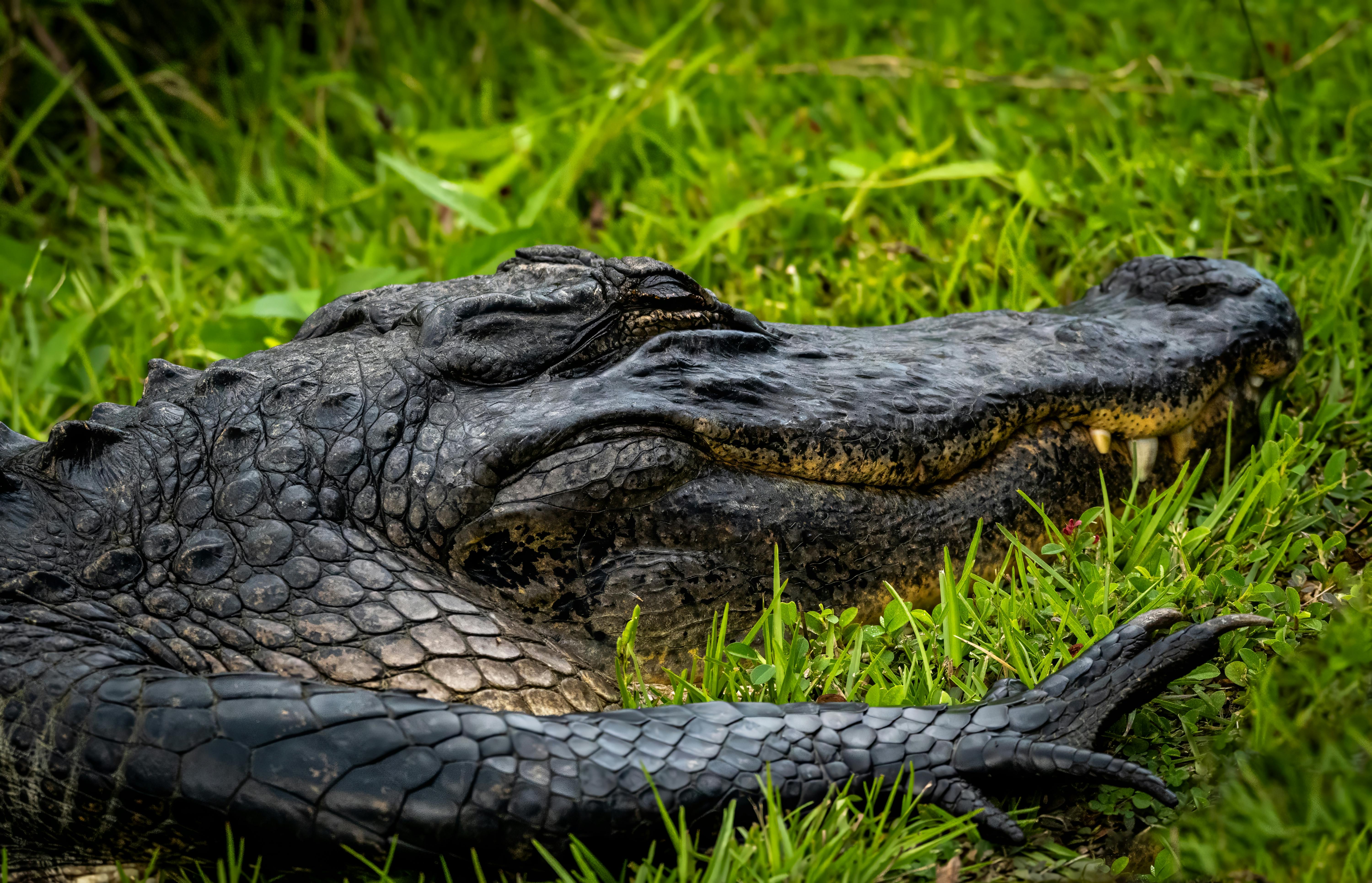
Have you ever wonder why your dog’s nose is always wet? Many people think it just a cute feature, but it turns out there more to it than meets the eye. In fact, dogs’ noses are not only adorable but also serve several important purposes. Here we look at five surprising benefits of your dog’s wet nose that you probably never knew about.
1. Temperature Regulation
Dogs don’t sweat like humans do, so they have to find other ways to cool down. A wet nose help them regulate their body temperature. When your pooch pants, the moisture on their nose evaporates, which cools their body. This is especially important during hot summer days when they need to stay cool.
2. Enhanced Sense of Smell
Dogs have an incredible sense of smell, and their wet noses play a crucial role in it. The wetness on a dog’s nose help to capture scent particles in the air. This is how they can detect smells even better than they already do. Wet noses can absorb more scent molecules, which means more information for your furry friend. It’s like having a supercharged olfactory system!
3. Health Indicator
A dog’s nose can be a good indicator of their health, but many owners don’t realize this. Generally, a healthy dog have a moist, cool nose. If your dog’s nose becomes excessively dry, warm, or cracked, it could be sign of dehydration or illness. Understanding these signs is important for keeping your dog healthy.
4. Communication Tool
Believe it or not, a dog’s nose can also be a form of communication! Dogs often greet each other by sniffing each other’s noses. This behavior helps them gather information about their fellow canines, like where they’ve been and what they’ve eaten. Your dog’s wet nose serves as a social tool, helping them interact and bond with other dogs.
5. Natural Antibacterial Properties
Some research suggest that the moisture on a dog’s nose contains natural antibacterial properties. This can help protect their noses from infections and irritations. The wetness can keep harmful bacteria at bay, which is particularly useful when your dog is exploring the outdoors. So, every time your dog sniffs around, their wet nose is working hard to keep them healthy!
Additional Fascinating Facts about Dog Noses
- Nose Prints: Just like fingerprints in humans, each dog has a unique nose print. This means that you could theoretically identify a dog by just looking at their nose!
- Color Changes: A dog’s nose can change color due to various reasons. Sometimes it’s just seasonal, while other times it can indicate a health issue.
- Breed Differences: Not all dog breeds have the same type of nose. Some breeds, like bulldogs, have wrinkled noses, while others have long and sleek ones.
Dogs and Their Noses: A Quick Comparison
Here’s a simple table comparing how different dog breeds might use their noses:
| Breed | Nose Type | Notable Nose Feature |
|---|---|---|
| Beagle | Long and wet | Excellent scent tracking |
| Bulldog | Short and wrinkled | Limited scent detection but great at socializing |
| Bloodhound | Long and moist | Unmatched sense of smell |
| Dachshund | Medium and wet | Good for scent games due to their hunting background |
Why Do Dogs Have Wet Noses?
Now, you might be asking yourself, “Why do dogs have wet noses?” Well, it’s not just for show. The wetness of a dog’s nose serves multiple essential functions, from enhancing their ability to smell to helping them cool down. The evolutionary benefits are clear, and it’s a fascinating topic that connects to their needs as animals.
So next time you get a nose boop from your furry friend, remember that there’s a lot more to that wet nose than you might think. It not only makes them adorable but also plays a vital role in their health and communication. Understanding these benefits can help you appreciate your dog even more! Whether your dog is a playful pup or a seasoned senior, those wet noses are truly special.
Is Your Dog’s Wet Nose a Sign of Health? Unraveling the Myths

Is your dog’s wet nose a sign of health? This question pops up in conversations among dog owners, veterinarians, and pet enthusiasts alike. The concept that a wet nose is synonymous with good health has been ingrained in our minds, but is it really true? Let’s dive into the fascinating world of dog noses and unravel some myths about why they’re often wet.
Why do dogs have wet noses?
First off, let’s look at the biology of our furry friends. Dogs have wet noses for several reasons, and it’s not just for show. Here are some key points:
Temperature Regulation: Dogs can’t sweat like humans do. Instead, they rely on their noses to help regulate body temperature. When a dog’s nose is wet, it helps to cool down their body as evaporation takes place.
Enhanced Sense of Smell: A wet nose can actually improve a dog’s sense of smell. The moisture helps to absorb scent molecules, making it easier for dogs to detect various odors. This is why dogs seem to sniff everything!
Health Indicator: While a wet nose can indicate good health, it is not the only sign. Other factors, like energy levels and eating habits, also play a crucial role. A dog with a dry nose isn’t necessarily sick, and a wet nose doesn’t guarantee good health.
The Myths Surrounding Wet Noses
Now that we know why dogs have wet noses, let’s debunk some myths that surround this topic:
Myth: A Wet Nose Means Your Dog is Healthy
Reality: While a wet nose can be a sign of health, it doesn’t always mean your dog is doing well. Factors like environment, activity level, and even the weather can influence nose moisture.Myth: A Dry Nose Indicates Illness
Reality: A dog’s nose can be dry for various reasons, like temperature changes or after sleeping. It’s best to look for other signs of illness, such as lethargy or loss of appetite.Myth: All Dogs Have Wet Noses
Reality: Some breeds naturally have drier noses. For example, bulldogs often have less moisture in their noses compared to retrievers.
The History of Dog Noses
Dogs have been companions to humans for thousands of years. The unique wetness of their noses has evolved over time. Ancient breeds, like the Basenji, have distinct nose characteristics that may differ from modern breeds.
Evolutionary Perspective: The wet nose trait helped ancient dogs hunt and survive in the wild. It made them better at scent tracking prey and identifying danger.
Cultural Significance: In various cultures, a dog’s nose has been seen as a barometer for health and emotions. People would often associate a wet nose with a friendly and happy dog.
Key Factors Impacting Nose Moisture
A dog’s nose moisture can be influenced by several factors. Here’s a quick list to consider:
Weather Conditions: Humidity and temperature can impact how wet or dry a dog’s nose is. Hot, dry days often lead to drier noses.
Hydration Levels: Just like humans, dogs need water. If they’re dehydrated, their noses may dry out.
Health Status: Certain health issues can lead to changes in nose moisture, like allergies or infections.
Quick Tips for Dog Owners
If you’re a dog owner, you might find these practical tips helpful regarding your pet’s nose health:
Monitor Their Nose: Keep an eye on any significant changes. A sudden shift from wet to dry, or vice versa, might warrant a vet visit.
Provide Fresh Water: Always ensure your dog has access to clean water. Hydration is key to maintaining nose moisture.
Check for Other Symptoms: Alongside nose wetness, pay attention to your dog’s behavior, appetite, and energy levels for a more comprehensive health assessment.
The Importance of Regular Vet Check-Ups
Regular veterinary check-ups are essential. They can help catch any underlying health issues before they become serious. A vet can provide valuable insights about your dog’s overall health, including the condition of their nose.
Dogs are incredible creatures, and their wet noses play a fascinating role in their health and well-being. While a wet nose can be a positive sign, it is just one piece of the puzzle. Many factors contribute to a dog’s overall health, and understanding them can help you be the best pet owner possible. So next time you wonder if your dog’s wet nose means they’re healthy, remember—it’s just part of the bigger picture!
How Do Wet Noses Help Dogs Detect Smells? Explore Their Unique Anatomy

Have you ever wondered how dogs seem to sniff out everything from hidden treats to, well, trouble? One of the most fascinating aspects of our canine companions is their ability to detect smells, and a big part of that has to do with their wet noses. Yes, those adorable, cold, and often slimy noses are not just for show; they play a crucial role in how dogs perceive the world around them. So, let’s dig into how do wet noses help dogs detect smells, their unique anatomy, and why do dogs have wet noses in the first place.
The Unique Anatomy of a Dog’s Nose
Dogs have an incredibly sophisticated sense of smell, which is about 10,000 to 100,000 times more acute than that of humans. This remarkable ability stems from a variety of anatomical features:
Olfactory Receptors: Dogs possess around 220 million olfactory receptors in their noses, compared to a mere 5 million in humans. The sheer number of receptors allows dogs to detect scents that are far beyond our capability.
Olfactory Bulb: The olfactory bulb, which processes smells, is significantly larger in dogs than in humans. This means that they can not only detect smells but also interpret them more effectively.
Nasal Turbinates: These are structures inside the nose that help to filter and warm air, but they also increase the surface area for smell detection. The more surface area, the more scent the dog can collect.
Moisture Production: The moisture on a dog’s nose isn’t just for cooling; it also helps to dissolve scent particles. When a dog sniffs, the wet surface of their nose captures these particles more effectively.
Why Do Dogs Have Wet Noses?
So, why do dogs have wet noses anyway? It turns out there are a few reasons for this fascinating feature, some of which are very practical:
Scent Capture: As mentioned, a wet nose can absorb more scent particles. This helps dogs to identify smells better, making them excellent trackers and hunters.
Temperature Regulation: Dogs do not sweat like humans do. Instead, they rely on their noses to help regulate their body temperature. The moisture evaporates, which cools them down, especially during hot weather.
Health Indicator: A dog’s wet nose can often indicate its health. A healthy dog typically has a moist nose, while a dry nose can signal dehydration or illness. However, this is not a definitive rule, and there are exceptions.
Social Interaction: Dogs use their noses to communicate with each other. A wet nose may convey information about a dog’s emotional state or health to other dogs.
Fascinating Facts About Dog Noses
Unique Nose Prints: Just like human fingerprints, every dog has a unique nose print. This can actually be used for identification purposes.
Scent Memory: Dogs have an extraordinary scent memory, allowing them to remember scents for years. This ability is useful for search and rescue missions or even for detecting drugs.
Sniffing Technique: Dogs have a unique way of sniffing that involves inhaling and exhaling through their noses. This two-step process allows them to gather more scent information.
The Importance of Wet Noses in Hunting: Dogs bred for hunting, like Bloodhounds, rely heavily on their wet noses to track scents over long distances, sometimes even days after the scent has been laid down.
The Role of Wet Noses in Training and Work
Wet noses are also integral in various working roles for dogs:
Search and Rescue: Trained dogs can find missing persons using their sense of smell, often locating them even in challenging conditions.
Detection Dogs: These dogs can detect drugs, explosives, and even certain medical conditions in humans, thanks to their superior olfactory capabilities.
Therapy and Service Dogs: Some service dogs are trained to detect changes in their owner’s body chemistry, such as blood sugar levels in diabetics, which can help save lives.
Overall, the wet nose of a dog is a fascinating adaptation that enhances their ability to navigate the world. From gathering scents to regulating body temperature, these incredible features make dogs not just our pets, but also vital partners in many aspects of human life. So, next time you see your furry friend with that adorable wet nose, remember that it’s more than just a cute feature; it’s a powerful tool that helps them experience life in ways we can only imagine.
Wet Nose vs. Dry Nose: What Your Dog’s Snout Says About Their Health
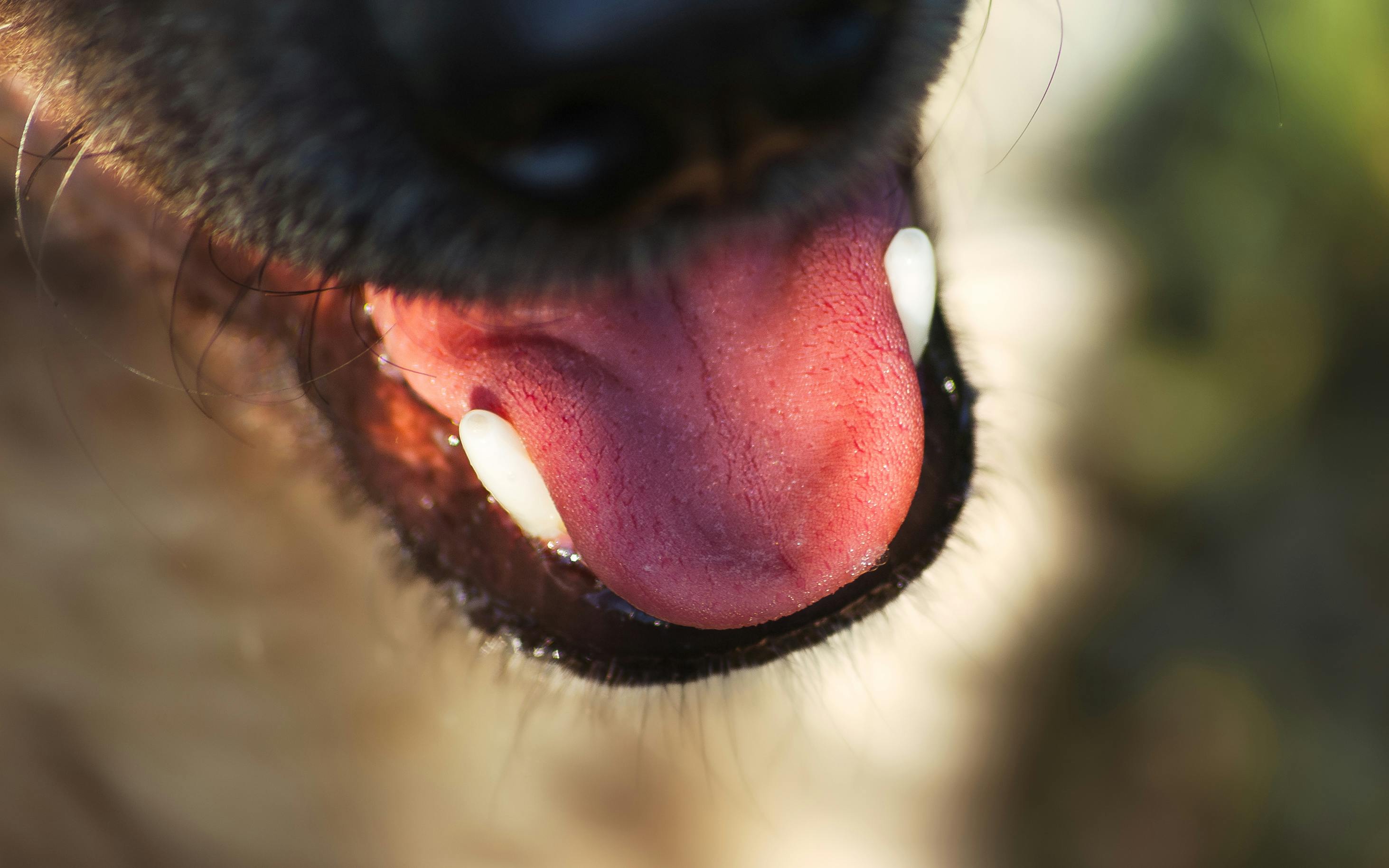
Understanding your dog’s health can sometimes be as simple as looking at their nose. Wet nose vs. dry nose can tell you a lot about what’s going on with your furry friend. Why do dogs have wet noses, anyway? This fascinating secret is intertwined with their biology and behavior. Let’s dive into the world of canine noses and see what they can reveal.
Why Do Dogs Have Wet Noses?
Dogs has wet noses mainly because of a few key reasons. First, their noses are constantly moist due to a thin layer of mucus which helps them absorb scent molecules, enabling them to smell better. Isn’t that amazing? Here are some reasons why their noses stay wet:
- Scent Detection: Moisture helps capture scent particles from the air, making it easier for dogs to smell things.
- Temperature Regulation: Dogs can’t sweat like humans do, so a wet nose helps them cool down.
- Health Indicator: A wet nose can be a sign of good health, while a dry one might indicate something is off.
Wet Nose vs. Dry Nose: What’s the Difference?
The state of your dog’s nose can give you clues about their health. A wet nose is generally a good sign, but a dry nose doesn’t always mean something is wrong. Here’s a breakdown:
| Condition | Wet Nose | Dry Nose |
|---|---|---|
| Health Indicator | Generally healthy | Could indicate dehydration or illness |
| Temperature | Cooler than the body | Warmer than the body |
| Additional Signs | Playfulness, alertness | Lethargy, decreased appetite |
What Could a Dry Nose Mean?
While many people assume a dry nose signals a health issue, it’s not always a cause for alarm. Here’s what could cause a dry nose in dogs:
- Dehydration: Just like us, if dogs aren’t drinking enough water, their noses might dry out.
- Weather Conditions: Hot and dry weather can lead to a dry nose. In winter, the cold air can also have an impact.
- Illness: Sometimes, a dry nose can be a sign of fever, allergies or even infections.
It’s a good idea to monitor other symptoms if you notice a change.
When to Be Concerned
A dry nose might not always be serious, but it’s important to know when to call the vet. Here are some red flags:
- Persistent Dryness: If the dryness last more than a few days.
- Cracking or Bleeding: This could indicate a more serious issue.
- Behavioral Changes: If your dog seems lethargic or isn’t eating, it could be a sign of illness.
Other Factors Affecting Nose Moisture
Your dog’s age, breed, and overall health plays a role in the moisture of their nose. For instance:
- Puppies: Often have wetter noses as their systems are still developing.
- Older Dogs: Might have drier noses due to changes in health or hydration.
- Breed Variations: Some breeds naturally have different nose textures and moisture levels.
Fun Facts About Dog Noses
Did you know that a dog’s nose has unique patterns, similar to a human fingerprint? Here’s some more fun stuff about dog noses:
- Scent Detection: Dogs has about 220 million scent receptors compared to humans’ 5 million.
- Temperature Regulation: Dogs use their noses, along with panting, to regulate body temperature.
- Communication Tool: Dogs also use their noses to gather information about other dogs through sniffing.
What You Can Do
To help maintain your dog’s nose health, you can do a few things:
- Hydration: Always ensure fresh water is available.
- Humidity: Use a humidifier during dry seasons to help keep their nose moist.
- Check Regularly: Get into the habit of checking your dog’s nose along with other health checks.
By keeping an eye on your dog’s nose, you can catch possible health issues early. This small change in routine could make a huge difference in your pet’s well-being.
So next time you’re petting your furry friend, take a moment to check their nose. Wet or dry, understanding what it means can help you keep your dog happy and healthy. Knowing why do dogs have wet noses adds a layer of appreciation to your bond with them. After all, our pets deserve the best care we can give, and sometimes it starts with the little things like a simple sniff.
The Evolutionary Purpose of Wet Noses in Dogs: A Deep Dive

The wet noses of dogs has been a source of curiosity for many pet owners and animal lovers. Ever wonder why their noses are always damp? It’s not just for show. There’s a fascinating evolutionary purpose behind it, and understanding this can deepen our appreciation of our canine companions. So, let’s dive into this intriguing topic and explore the question: why do dogs have wet noses?
The Science Behind Wet Noses
Dogs have wet noses primarily for sensory reasons. The moisture helps in several ways:
- Enhanced Smell: A wet nose can absorb scent chemicals from the air better than a dry one. This helps dogs to detect and identify smells more effectively.
- Temperature Regulation: Dogs don’t sweat like humans do. Instead, they cool off through their noses. The wetness on their noses aids in thermoregulation.
- Health Indicator: A dog’s nose can give clues about their health. A healthy dog typically has a moist nose, while a dry or cracked nose may indicate illness or dehydration.
Historical Context of Dogs’ Noses
Dogs have been domesticated for thousands of years, dating back to ancient human civilizations. Through selective breeding, humans have emphasized certain traits, including the characteristics of their senses. The wet nose trait has likely persisted because it provides significant survival advantages.
- Tracking: Early hunting dogs relied on their keen sense of smell to track prey. A wet nose allowed them to pick up scents more effectively in various environments.
- Social Interactions: Dogs are social animals and often use their sense of smell to communicate. A wet nose can help them gather information from their surroundings and other animals.
Comparing Wet Noses to Dry Noses
Not all dogs have the same nose moisture. In fact, there are differences among breeds and individual dogs. Here’s a quick comparison:
Wet Nose vs. Dry Nose
| Feature | Wet Nose | Dry Nose |
|---|---|---|
| Scent Detection | Excellent | Moderate |
| Temperature Regulation | Effective | Less effective |
| Health Indicator | Generally healthy | Potential health issues |
Practical Examples of Nose Functionality
- Tracking Scents: Bloodhounds, known for their incredible sense of smell, rely heavily on their wet noses to follow trails over long distances.
- Thermoregulation: On hot days, you might notice your dog panting and their nose staying wet; it helps them cool down while they’re active.
What Factors Affect Nose Wetness?
Several factors can influence how wet a dog’s nose is:
- Hydration Levels: Dehydrated dogs may have drier noses.
- Environmental Conditions: Dry air or heat can lead to a dry nose.
- Health Issues: Certain illnesses can cause changes in nose moisture.
Fun Facts About Dogs’ Noses
- Dogs have about 220 million scent receptors in their noses, compared to about 5 million in humans.
- The texture of a dog’s nose is unique, much like a human fingerprint.
- Dogs can detect certain diseases, such as cancer or diabetes, through their sense of smell.
Myths Surrounding Wet Noses
There are many myths about why dogs have wet noses. Here are some common misconceptions:
Myth: A cold nose means a dog is sick.
- Fact: A dog’s nose temperature can vary and isn’t a reliable health indicator.
Myth: All dogs have wet noses all the time.
- Fact: Many factors can lead to temporary dryness or wetness.
Caring for Your Dog’s Nose
Maintaining your dog’s nose is important. Here are some tips:
- Hydration: Always ensure your dog has access to fresh water.
- Environment: Protect your dog from extreme heat or cold, which can affect nose moisture.
- Regular Vet Checkups: Keep up with regular veterinary visits to catch any potential health issues early.
The mystery of why dogs have wet noses is a captivating blend of science, history, and biology. Understanding this evolutionary purpose not only enriches our relationship with dogs, but it also highlights the extraordinary adaptations these animals have made over time. So, the next time you give your furry friend a scratch behind the ears, take a moment to appreciate that moist little nose and all the wonders it holds.
Curious Canines: Why Does Your Dog’s Nose Feel Cold and Wet?
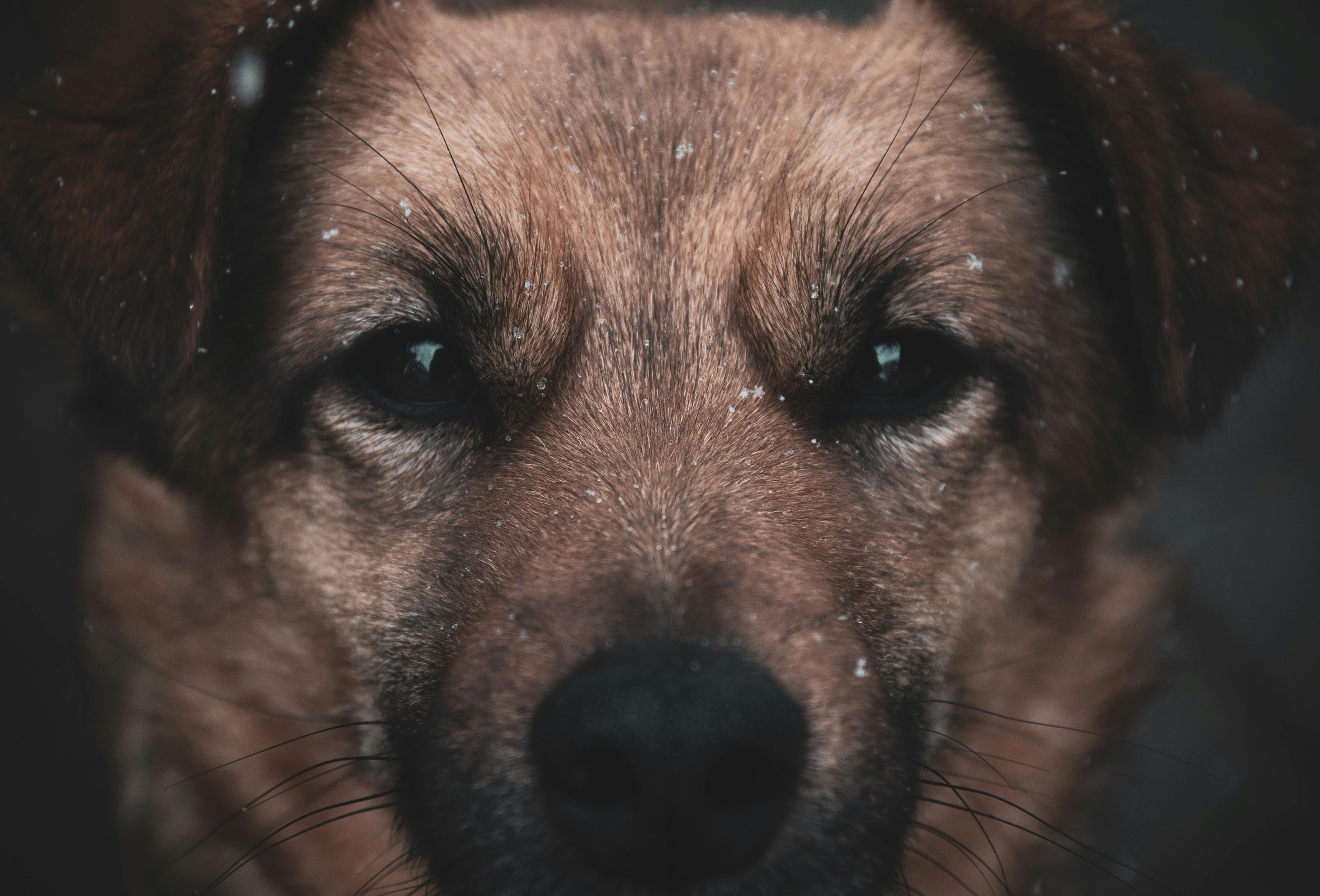
Curious Canines: Why Does Your Dog’s Nose Feel Cold and Wet?
Have you ever wondered why your dog’s nose is often cold and wet? It’s one of those curious quirks about our furry friends that can leave many pet owners scratching their heads. Dogs’ noses are not only adorable but they also play an important role in their health and behavior. Let’s dig deeper into why dogs have wet noses, and explore some fascinating facts about this unique canine characteristic.
The Science Behind Wet Noses
A dog’s nose is covered in a moist layer of mucous, which helps in several ways. The main reasons why dogs have wet noses includes:
- Enhanced Smell: The moisture on a dog’s nose helps to capture scent particles from the air, making it easier for them to smell. Dogs have an incredible sense of smell, estimated to be between 10,000 to 100,000 times more sensitive than humans. A wet nose helps them do their job better.
- Temperature Regulation: Dogs also sweat through their noses. When a dog’s body temperature rises, the moisture evaporates from their nose which helps cool them down. It’s like their own natural air conditioning system.
- Health Indicator: A cold and wet nose is often a sign of a healthy dog. However, it’s important to note that not all dogs will have the same nose temperature, and it can vary from breed to breed.
Understanding the Variability
Not every dog has a nose that’s always cold and wet. Some factors influence this difference, including:
- Breed Differences: Certain breeds, like Bulldogs or Pugs, may have drier noses due to their unique facial structure, while other breeds, like Retrievers, often have wetter noses.
- Environmental Conditions: Weather can influence the moisture levels on a dog’s nose. For instance, dry, warm weather can cause a dog’s nose to feel drier than normal.
- Health Status: A change in the condition of a dog’s nose can indicate health issues. For example, a dry flaky nose might signal dehydration or allergies.
Historical Perspective on Dog Noses
Dogs have been domesticated for thousands of years and their noses have evolved alongside them. In ancient times, dogs were bred for specific tasks like hunting, herding, or guarding. Their keen sense of smell was crucial for survival and it is still one of their most valuable traits today.
- Hunting Dogs: Breeds like Bloodhounds and Beagles were specifically bred for their incredible olfactory abilities, which is why they often have wetter noses.
- Herding Breeds: Dogs that were used to herd livestock also relied on their noses to communicate with their handlers and navigate their environment.
Fun Facts About Dog Noses
Here are some intriguing facts about dog noses that you might not know:
- Nose Prints are Unique: Just like human fingerprints, each dog nose has a unique pattern of ridges and creases. They can even be used for identification!
- They Can Sense Emotions: Dogs can detect changes in human emotions through smell. They are able to sense pheromones released when humans are happy, scared, or anxious.
- Temperature Sensitivity: Dogs can sense temperature changes through their noses, which helps them navigate their environment better.
When to Be Concerned
While a wet nose is generally a sign of a healthy dog, there are certain signs to watch for that might indicate a problem:
- Dry, Cracked Nose: This could suggest dehydration, a skin condition, or an allergy.
- Nose Bleeding: If your dog has a bleeding nose, it’s wise to consult your vet.
- Changes in Moisture: If your dog’s nose suddenly becomes dry or hot, it may be worth a trip to the veterinarian.
Practical Tips for Dog Owners
Here are some practical tips to keep your dog’s nose healthy:
- Stay Hydrated: Make sure your dog has access to fresh water at all times.
- Check the Environment: If the weather is extremely dry, consider using a humidifier indoors.
- Regular Vet Check-ups: Routine veterinary visits can help catch any potential health issues early on.
Understanding why dogs have wet noses can deepen your appreciation for these incredible animals. Their unique anatomy serves a significant purpose, enhancing their ability to interact with the world around them. Remember, the next time you give your pup a pat and feel that cold, wet nose, you’re not just feeling love; you’re feeling a vital part of what makes dogs such extraordinary companions.
Understanding Dog Behavior: What a Wet Nose Reveals About Your Pet
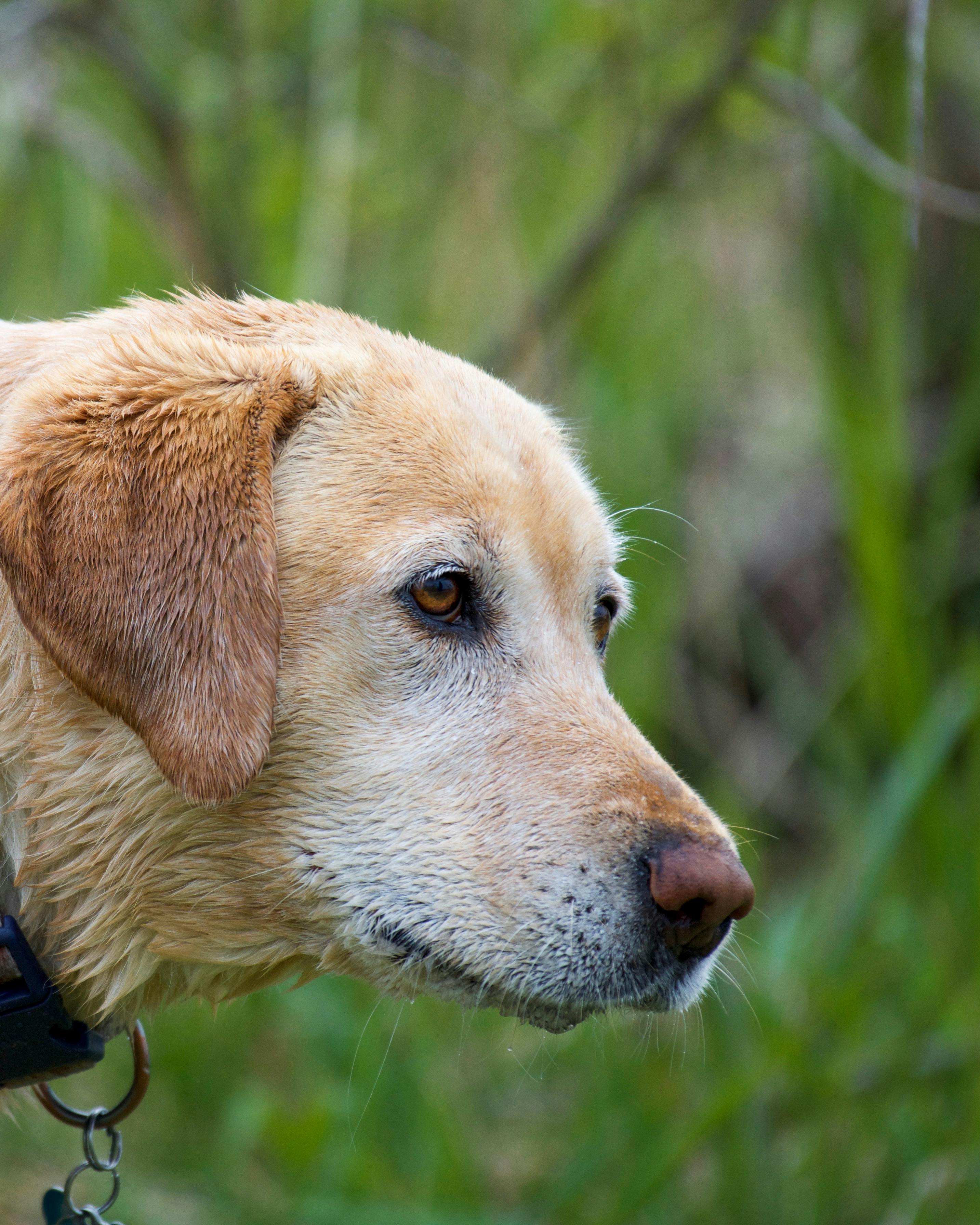
Dogs have been our loyal companions for thousands of years. They bring joy, love, and sometimes trouble into our lives. But have you ever wondered why your furry friend’s nose is always wet? Understanding dog behavior can give us fascinating insights into their health and emotions. So, let’s dive into the intriguing world of wet noses and discover the answer to the question: why do dogs have wet noses?
The Science Behind Wet Noses
First off, a dog’s nose is not just for decoration. It’s a complex organ that serves multiple purposes. The moisture on a dog’s nose comes from a combination of sweat and mucus, which helps them in various ways.
Temperature Regulation: Just like humans sweat to cool down, dogs use their wet noses to regulate body temperature. They might lick their noses, or their noses might be wet from the surrounding environment.
Scent Enhancement: Dogs have an incredible sense of smell—about 10,000 to 100,000 times more sensitive than humans. A wet nose helps in capturing scent particles, making it easier for them to detect smells. The moisture also helps in the process of olfaction, which is the scientific term for the sense of smell.
Health Indicator: A wet nose can also be a sign of a dog’s health. Generally, a healthy dog will have a moist nose, while a dry nose could indicate dehydration or illness.
Historical Context of Dog Noses
Throughout history, different cultures have recognized the unique characteristics of dog noses. Ancient Egyptians revered dogs and often depicted them in art, highlighting their keen sense of smell. In fact, in many civilizations, dogs were used for hunting due to their extraordinary olfactory capabilities.
In the 19th century, dogs were also employed in police work for their ability to sniff out criminals. Today, they are still used in various fields, such as search-and-rescue missions, detection of drugs or explosives, and even in medical settings to detect diseases like cancer.
What Can a Wet Nose Tell You?
Here’s a quick breakdown of what a wet nose might indicate about your dog’s health and emotions:
Healthy Dog:
- Moist and cool to the touch
- Active and playful behavior
- Regular appetite and drinking habits
Potential Health Issues:
- Dry or cracked nose (could indicate dehydration or fever)
- Excessive discharge (could indicate infection)
- Persistent wetness (could be a symptom of allergies)
Fun Facts About Dogs and Their Noses
Dog Breeds and Nose Moisture: Not all dogs have the same level of nose moisture. For instance, breeds like Bulldogs may have drier noses compared to breeds like Labradors or Golden Retrievers.
Nose Prints: Just like human fingerprints, every dog has a unique nose print. This can be used for identification purposes!
The Role of Environment: A dog’s environment also plays a role in the moisture of their nose. Hot and dry climates can lead to dryer noses, whereas humid environments can keep them moist.
Comparing Dog Noses to Human Noses
When comparing dog noses to human noses, there are some key differences and similarities:
| Aspect | Dog Nose | Human Nose |
|---|---|---|
| Moisture Level | Typically wet | Usually dry |
| Sensitivity | Extremely sensitive | Less sensitive |
| Functionality | Scent detection and temperature regulation | Primarily scent detection |
Practical Tips for Keeping Your Dog’s Nose Healthy
Keeping your dog’s nose healthy is essential. Here are some tips to ensure your furry friend stays happy and healthy:
Hydration: Make sure your dog has access to fresh water at all times. Dehydration can lead to a dry nose.
Regular Vet Visits: Routine check-ups can help catch any potential health issues early.
Avoid Allergens: If your dog has allergies, try to minimize their exposure to allergens that could affect their nose.
Monitor Changes: Keep an eye on any changes in your dog’s nose and overall behavior. If something seems off, consult a vet.
Understanding dog behavior, especially the significance of a wet nose, can help strengthen your bond with your pet. It’s essential to pay attention to these little details, as they can reveal a lot about your furry friend’s health and emotional state. So next time you give your pup a scratch behind the ears, remember that their wet nose is more than just a cute feature—it’s a window into their well-being.
7 Fun Facts About Dog Noses: Why Wetness Is Just the Beginning

When you think of dogs, one of the first things that probably comes to mind is their adorable wet noses. But have you ever wondered why dogs have wet noses? It’s not just for show! The truth about dog noses is fascinating and goes beyond their moisture. More than just a cute feature, a dog’s nose provides a wealth of information about their health and behavior. Here are seven fun facts about dog noses that reveal the secrets behind that wetness and why it matters.
1. The Science of Wetness
Did you know that a dog’s nose is wet for a good reason? The moisture helps them to smell better! The wetness on their noses helps to capture scent particles. A dog’s sense of smell is about 10,000 to 100,000 times more sensitive than that of humans. When their noses are damp, it enhances their ability to detect odors in the environment. So, next time you see your pup sniffing around, remember that their wet nose is a tool for exploration!
2. Temperature Regulation
Dogs don’t sweat like humans. Instead, they have another method of keeping cool. Their noses play a role in regulating body temperature. When a dog pants, moisture evaporates from their nose, which helps to cool them down. So, if you see your dog with a particularly wet nose on a hot day, it might be working hard to keep your furry friend comfortable.
3. Unique Nose Prints
Just like human fingerprints, every dog has a unique nose print. The patterns of ridges and creases on a dog’s nose are distinctive to each individual. This has even been used for identifying dogs in some cases! Some organizations have suggested that nose prints could be used for identification, similar to how we use fingerprints. It’s a cool reminder of how special each dog is.
4. Health Indicator
A dog’s nose can serve as an indicator of their health. A healthy dog typically has a moist and cool nose. However, if you notice that your dog’s nose is dry and cracked, it might be a sign of dehydration or illness. It’s not always the case, and many factors can affect a dog’s nose. But if you see any drastic changes, it’s best to consult with a veterinarian to ensure everything is alright.
5. The Role of Breed Differences
Not all dog noses are created equal! Different breeds can have varying nose shapes and sizes which can affect how they smell. Breeds like Bloodhounds, which have long, droopy noses, are excellent scent trackers. On the flip side, brachycephalic breeds like Bulldogs have shorter noses and may not have the same olfactory capabilities. It’s interesting how a dog’s breed can influence its unique features, including their noses.
6. Social Communication
Dogs use their noses to communicate with other dogs too. When they greet each other, they often sniff each other’s noses and behinds. This behavior helps them gather information about each other, such as age, gender, health status, and even mood. It’s like a doggy handshake! So, when your dog is sniffing around, they’re not just being nosy; they’re gathering vital social cues.
7. The Smell of the Past
Dogs can remember scents for a long time. Their brains are wired to recognize and recall smells, which allows them to connect scents with memories. This is why your dog might get excited when they smell something familiar, like a treat or even a person they love. Dogs have an incredible memory linked to their sense of smell, and it’s a big part of how they experience the world.
Quick Facts Summary
- Wet Noses: Enhance scent detection.
- Temperature Regulation: Helps dogs cool down.
- Unique Prints: Every dog has a distinct nose print.
- Health Indicator: Moist noses usually mean good health.
- Breed Differences: Nose shape affects smelling capabilities.
- Social Communication: Dogs gather information through sniffing.
- Memory Connection: Scents help dogs recall past experiences.
There you have it, seven fun facts about dog noses that show just how amazing these features are. Understanding why dogs have wet noses and the role they play in a dog’s life can deepen your connection with your furry friend. So, next time you give your dog a pat and feel that wet nose, remember all the secrets and stories it holds!
How to Keep Your Dog’s Nose Healthy: Tips for Pet Owners on Moisture Maintenance

Keeping your dog’s nose healthy is a important part of being a responsible pet owner. Many people wonders why their furry friends have wet noses, and there’s actually some interesting science behind it. This article will explore why dogs have wet noses, how to maintain moisture in them, and what pet owners can do to ensure their beloved companions stay happy and healthy.
Why Do Dogs Have Wet Noses?
Dogs have wet noses for a few reasons, and understanding these can help owners appreciate their pets even more. Here’s some key points on the subject:
Temperature Regulation: Dogs sweat through their paw pads, but their noses also help them cool down. A wet nose helps to regulate body temperature, making it easier for them to stay cool during hot summer days.
Sense of Smell: The moisture on a dog’s nose helps to enhance their sense of smell. It captures scent particles in the air, making it easier for them to detect different scents. This is why dogs are often used in search and rescue operations.
Health Indicator: A healthy dog usually has a moist, cool nose. If a dog’s nose is dry, it could be a sign of dehydration or illness. However, it’s important to know that a dry nose doesn’t always mean something is wrong; it can simply be normal for some dogs.
Tips for Maintaining Your Dog’s Nose Moisture
So, how can pet owners keep their dog’s nose healthy? Here are some practical tips:
Hydration is Key: Always provide fresh water for your pet. Dehydration can lead to a dry nose, which isn’t good. Make sure your dog drinks enough water throughout the day.
Humidifiers: Using a humidifier in your home can help maintain moisture levels in the air. This is especially useful during winter when indoor air tends to be dry.
Nose Balms: There are special balms designed specifically for dogs that can help keep their noses moisturized. These products often contain natural ingredients that are safe for pets.
Proper Nutrition: A balanced diet plays a significant role in your dog’s overall health. Foods rich in Omega fatty acids, like fish oil, can help improve skin and coat health, which includes the nose.
Regular Vet Check-Ups: Regular visits to the veterinarian can help catch any potential health issues early on. They can provide specific advice tailored to your dog’s needs.
Recognizing Nose Problems
Being aware of changes in your dog’s nose can help you catch issues early. Here’s a list of potential problems to look out for:
Crustiness: If the nose develops crusty patches, it may be a sign of a skin infection or allergies.
Discoloration: A sudden change in color can indicate a problem. If the nose becomes very red or excessively dry, consult a vet.
Bleeding: Any sign of bleeding should be taken seriously. It could be a result of an underlying issue that needs immediate attention.
Fissures: Cracks or fissures in the nose can be painful. This can happen due to extreme weather conditions or dehydration.
Fun Facts About Dog Noses
Here are some fascinating facts about dog noses that you might not know:
Unique Patterns: Just like human fingerprints, each dog has a unique nose print. This can even be used for identification purposes!
More Smell Receptors: Dogs have around 220 million smell receptors in their noses, compared to a human’s 5 million. This is why they can pick up on scents we can’t even dream of.
Cold vs. Warm Noses: Contrary to popular belief, a cold nose doesn’t necessarily mean a dog is sick. Temperature can vary depending on activity levels and environmental factors.
Final Thoughts
Taking care of your dog’s nose is an essential part of their overall health. By understanding why dogs have wet noses and how to maintain their moisture, pet owners can contribute to their furry friends’ well-being. From ensuring proper hydration to using nose balms and keeping an eye out for changes, there are many steps you can take. Your dog relies on you for their care, and a healthy nose is a crucial part of that. So, next time you give your dog a scratch behind the ears, don’t forget to check out their nose too!
Conclusion
In conclusion, the wet noses of dogs serve multiple essential functions that contribute to their overall health and behavior. Primarily, a dog’s moist nose helps enhance their sense of smell, allowing them to detect scents more effectively, which is crucial for their communication and understanding of the world around them. Additionally, the moisture on their noses aids in thermoregulation, helping them cool down when necessary. The unique composition of nasal secretions also plays a role in keeping their noses clean and free from irritants. While a wet nose is often perceived as a sign of a healthy dog, it’s important to note that variations can occur due to factors like environment and health conditions. Ultimately, understanding the significance of your dog’s wet nose can help you provide better care and foster a deeper bond. So, the next time you see your furry friend, take a moment to appreciate this fascinating feature and its important role in their life!

